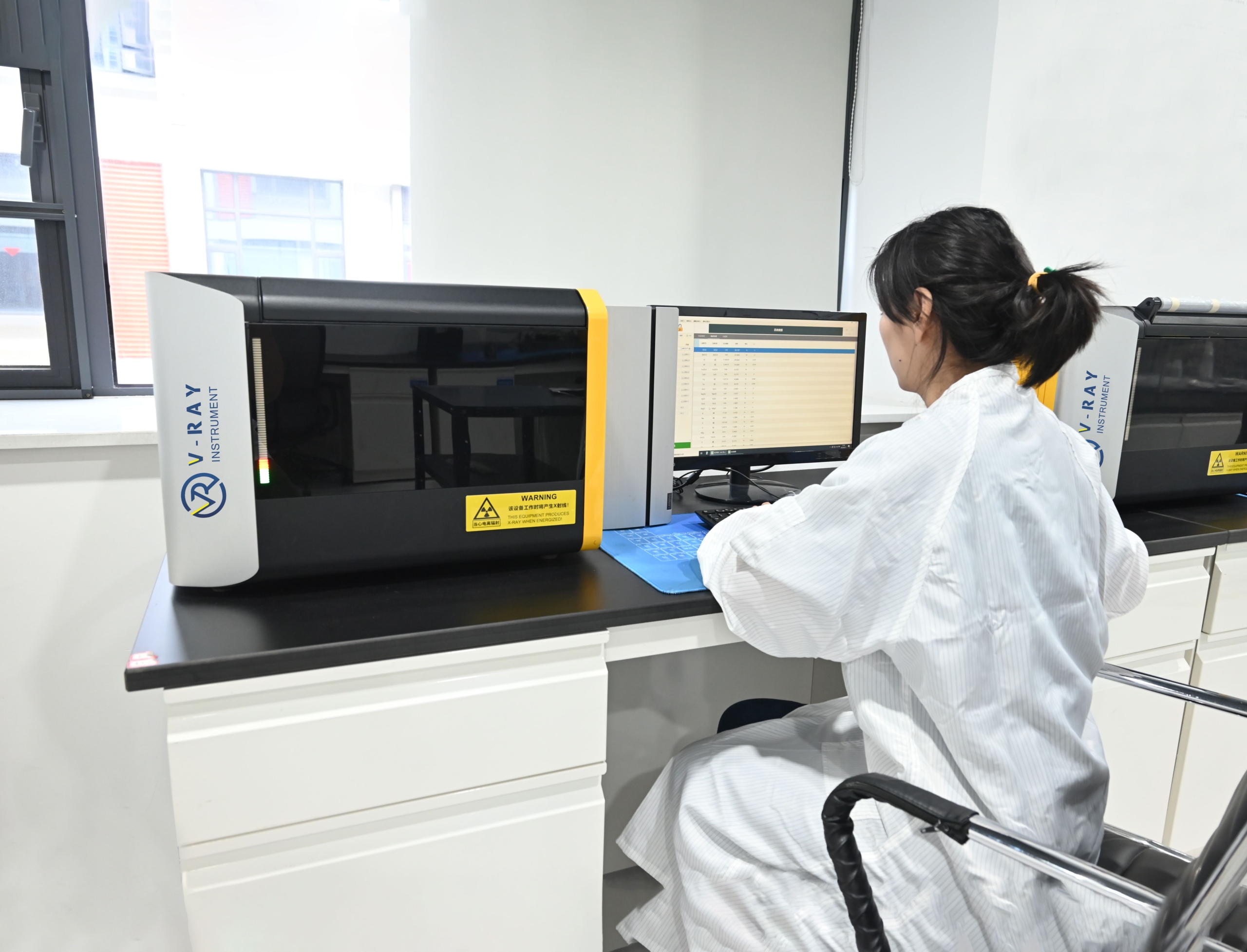Instrumen XRF mana yang sesuai dengan pengujian logam lab?
Pada intinya, Lab Metal Testing menuntut instrumen yang memberikan pembacaan presisi tinggi, Mendukung berbagai bahan, dan berintegrasi dengan mulus ke dalam alur kerja kontrol analitik atau kualitas. Ini berarti Benchtop XRF Instrumen umumnya paling cocok untuk pengaturan laboratorium karena kemampuan deteksi lanjutannya, stabilitas yang lebih baik, dan mode pengujian serbaguna.

Mengapa Lab harus memilih Benchtop Alat Analisis XRFs lebih dari perangkat portabel
Ketika genggam dan perangkat XRF portabel menawarkan kenyamanan di lapangan, Mereka sering mengorbankan kedalaman dan stabilitas analitik demi mobilitas. Untuk pengujian logam berbasis laboratorium-baik di departemen kontrol kualitas, kilang logam mulia, Pengaturan akademik, atau Institut Pengujian - Stabilitas, otomatisasi, dan pengulangan menjadi prioritas.
Model Benchtop memungkinkan:
- Ketepatan analitik yang lebih tinggi
- Posisi yang konsisten untuk pengujian berulang
- Ruang ruang yang lebih luas untuk berbagai ukuran sampel
- Integrasi yang lebih baik dengan perangkat lunak lab dan alat pelaporan
Fitur -fitur ini membuat benchtop XRF spektrometerS pilihan logis untuk laboratorium yang melakukan pengujian logam yang ketat.
Pertimbangan Utama Saat Memilih Instrumen Lab XRF
Saat mempersempit instrumen XRF terbaik untuk lab Anda, Pertimbangkan faktor -faktor penting berikut:
1.Rentang deteksi & Ketepatan
Lab harus menguji berbagai macam logam - termasuk emas, perak, platina, paladium, dan komposisi paduan. Perangkat dengan detektor lanjutan (seperti Si-Pin atau SDD) dan algoritma perangkat lunak memastikan deteksi elemen jejak dengan akurasi tinggi, sering hingga ± 0,001%.
2.Kompatibilitas sampel
Instrumen lab harus menangani bentuk sampel yang berbeda: Potongan padat, bubuk, pengajuan, Coating, dan spesimen berbentuk tidak teratur. Cari kolimator yang dapat disesuaikan, pemegang sampel multi-poin, dan ruang terbuka.
3.Kecepatan & Throughput
Di lingkungan volume tinggi, Kecepatan siklus uji penting. Instrumen dengan perangkat lunak cerdas, Profil kalibrasi preset, dan kemampuan pengujian batch meningkatkan efisiensi lab.
4.Pemeliharaan & Integrasi perangkat lunak
Pilih sistem dengan persyaratan pemeliharaan rendah, diagnostik sendiri bawaan, dan kemampuan untuk menghasilkan laporan yang dapat disesuaikan untuk keterlacakan dan kepatuhan.
5.Kepatuhan Pengaturan & Keamanan
Perisai radiasi, Sistem Interlock, dan kepatuhan dengan standar keselamatan CE/FCC sangat penting dalam pengaturan laboratorium.
Instrumen VRAY yang disarankan untuk pengujian logam lab

Berdasarkan aplikasi industri yang luas dan umpan balik pelanggan, Vray menawarkan berbagai benchtop dan analisis XRF presisi tinggi yang ideal untuk penggunaan laboratorium. Berikut adalah rincian model yang paling relevan:
1. VR - S6 Spektrometer XRF Benchtop
Terbaik Untuk: Laboratorium yang membutuhkan desain kompak dengan akurasi premium.
- Deteksi Elemen: Jangkauan penuh (K to u) dengan presisi ± 0,03%
- Desain: Licin, All-in-one dengan layar sentuh 11,6 "bawaan
- Teknologi: Detektor Si -Pin + Perangkat lunak multi -FP
- Keuntungan:
- Pengujian cepat tanpa persiapan sampel
- Ideal untuk logam, bubuk, dan cairan
- Hemat ruang (30% lebih kecil dari VR -T6)
- Tidak diperlukan PC eksternal
Model ini cocok dengan laboratorium penelitian, pusat pengujian logam yang berharga, dan departemen QC yang membutuhkan keandalan yang ringkas.
2. VR-T9 Penganalisa XRF dengan kemurnian tinggi
Terbaik Untuk: Lab yang berfokus pada analisis emas ultra-tinggi dan penyempurnaan logam.
- Presisi: Hingga ± 0,001%
- Fungsi: Perbandingan spektrogram untuk deteksi variabilitas real-time
- Fitur Khusus: Penuaan tabung sinar-X otomatis, Template Laporan yang Dapat Disesuaikan
- Menggunakan kasus:
- Membedakan 999.9 vs. 999.99 Kemurnian
- Pelat emas spesifikasi tinggi, batang, dan pengujian lembar
- Papan Sirkuit dan Verifikasi Paduan Kemurnian Tinggi
Ini adalah tujuan untuk laboratorium pemurnian logam dan pedagang grosir emas yang berurusan dengan bahan bernilai tertinggi.
3. Desktop VR - T7 Penganalisa logam
Terbaik Untuk: Laboratorium yang membutuhkan pengujian area mikro dan beragam kemampuan beradaptasi sampel.
- Desain Pengukuran: Pengujian top-up untuk analisis elemen
- Perangkat keras khusus: Platform X-Y presisi tinggi (25 akurasi μm)
- Perangkat lunak: Algoritma multi-Fp untuk nilai material dan analisis komposisi
- Jenis sampel: Perhiasan, Paduan Industri, barang perak, logam daur ulang
Sempurna untuk lembaga penelitian, Pabrikan QC Labs, dan pusat evaluasi perhiasan.
4. VR-T6 All-in-One Lab Analyzer
Terbaik Untuk: Laboratorium menengah ke besar yang membutuhkan pengaturan yang serba guna dan ramah pengguna.
- Komponen terintegrasi: Penganalisa, pendinginan, PC layar sentuh
- Rentang pengukuran: K ~ u
- Highlight: Analisis down-top
- Kesesuaian: Bekerja dengan baik untuk campuran sampel tidak teratur dan pengujian perhiasan tradisional
Itu menyeimbangkan kekuatan dan aksesibilitas, pas dengan nyaman dalam alur kerja laboratorium tanpa kurva belajar yang curam.
Model vray mana yang harus Anda pilih?
- Butuh kompak, kinerja yang kuat? Pergi dengan VR - S6.
- Menguji paduan emas dan sensitif dengan kemurnian tinggi? Memilih VR - T9.
- Bekerja dengan bentuk sampel kecil atau tidak biasa? Memilih VR - T7.
- Ingin pekerja keras lab yang seimbang? Mempertimbangkan VR - T6.
Semua analisis tingkat lab vray termasuk fitur keselamatan penting, Komponen pemeliharaan rendah, dan didukung oleh dukungan teknis ahli.
Pertanyaan yang sering diajukan
Q1:Bisa a Benchtop XRF Analyzer Uji sampel non-logam seperti bubuk atau cairan?
A1:Ya. Model seperti VR -S6 dioptimalkan untuk beberapa jenis sampel, termasuk padatan, cairan, dan bubuk tanpa persiapan.
Q2:Apa perbedaan antara VR -T6 dan VR -T9 untuk penggunaan laboratorium?
A2:VR-T6 adalah penganalisa all-in-one yang serba guna, sedangkan VR-T9 dioptimalkan presisi untuk mendeteksi bahan ultra-tinggi seperti 99999 emas.
Q3:Seberapa akurat penganalisa lab vray xrf?
A3:Tergantung pada modelnya, VRAY Analyzers menawarkan presisi setinggi ± 0,001%, membuat mereka cocok untuk laboratorium tingkat pengatur.
Q4:Apakah instrumen ini memerlukan pelatihan khusus untuk beroperasi?
A4:Tidak. Semua vray penganalisa benchtops fitur antarmuka perangkat lunak intuitif. Sebagian besar teknisi lab dapat mulai menguji dengan minimal onboarding.
Q5:Berapa lama waktu tes khas?
A5:Sebagian besar tes selesai di bawah 30 Detik, dengan beberapa model yang menawarkan pengujian batch cepat untuk throughput yang lebih tinggi.

WhatsApp
Pindai Kode QR untuk memulai obrolan WhatsApp dengan kami.